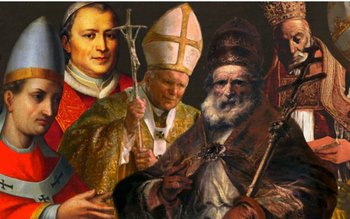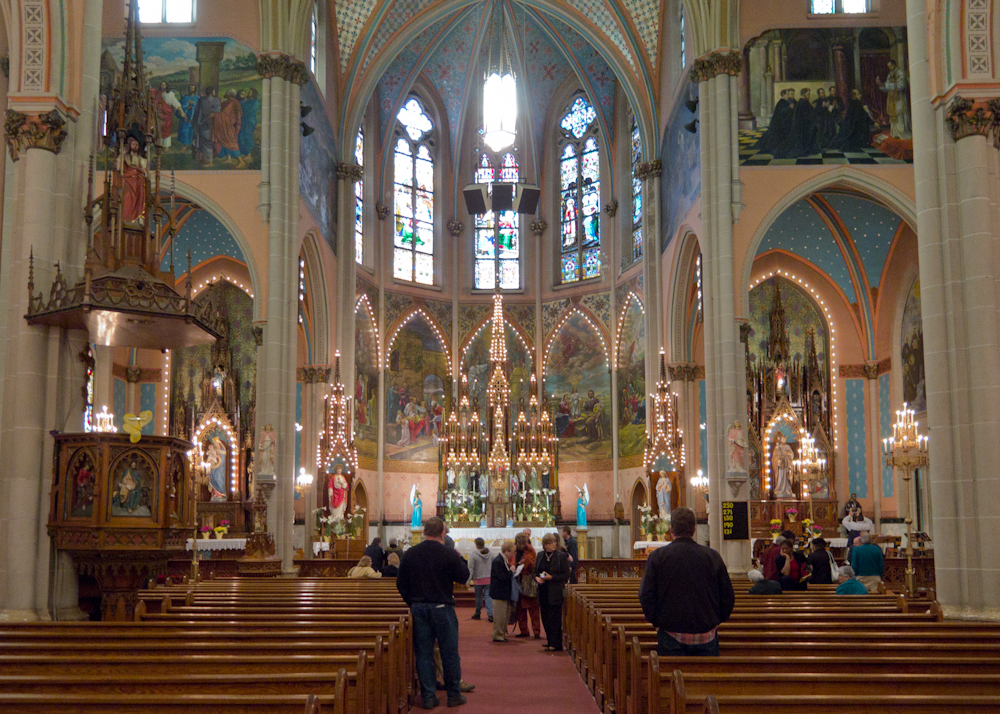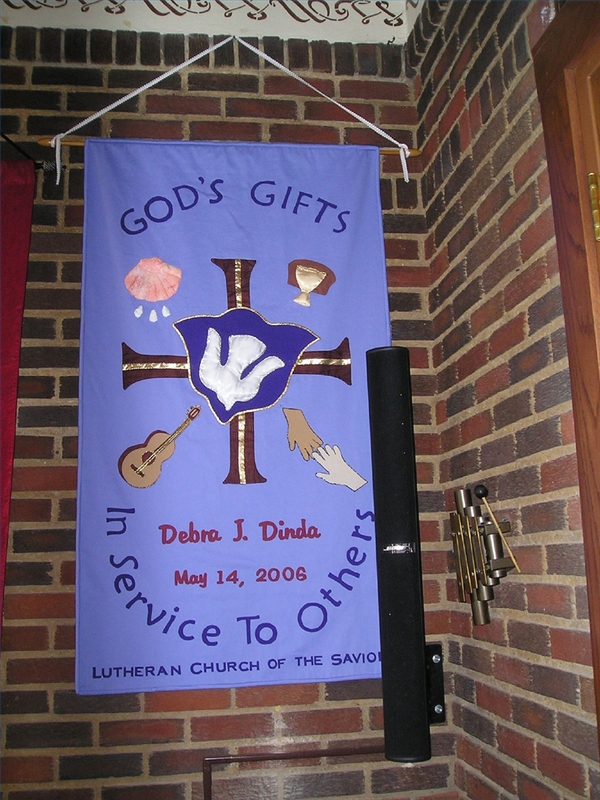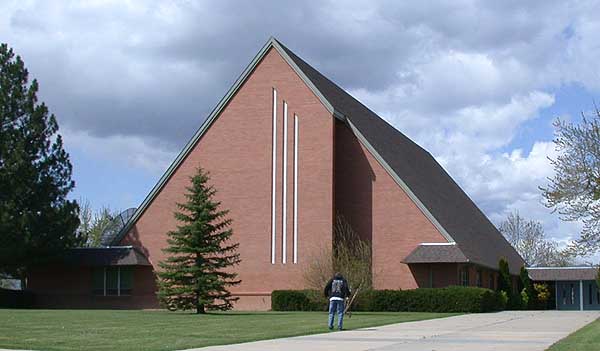Why Did The Catholic Church Introduce Tropes And It’s Impact To The Society. The Catholic Church has been at the forefront of Christian worship and liturgical practices for centuries. It has continuously evolved its rituals and traditions to suit the changing times and needs of its followers. One of the most significant innovations introduced by the church is the use of tropes in liturgical music. Tropes are musical embellishments that are added to the traditional chants and hymns during a church service. In this article, we will explore the reasons behind the introduction of tropes by the Catholic Church.
Origins of Tropes
The use of tropes dates back to the early days of the Catholic Church. They were initially used to enhance the liturgical chants sung during Mass. The chants were often simple and repetitive, and the addition of tropes added variation and depth to the music. The earliest known tropes were added to the Alleluia chants during the Easter season, which was a time of great celebration in the church.
By the 9th century, tropes had become an established part of liturgical music. They were used in various parts of the Mass, including the Kyrie, Gloria, and Credo. Tropes were often written by the church’s composers, and they were passed down through generations of musicians and singers.
The Importance of Tropes
Tropes were introduced by the Catholic Church for several reasons. Firstly, they added variety to the music and made it more interesting for the congregation. The repetition of the chants could become monotonous, and the addition of tropes gave the music a new dimension.
Secondly, tropes were used to convey specific theological messages. They were often written to reflect the themes of the liturgical season or the readings of the day. Tropes could also be used to praise saints or commemorate significant events in the church’s history.
Lastly, tropes allowed for creativity and individual expression within the church’s musical traditions. The composers who wrote the tropes had the freedom to experiment with different melodies, harmonies, and rhythms. This creativity helped to keep the church’s music relevant and engaging for the congregation.
Types of Tropes
There are several types of tropes that were used in the Catholic Church. One of the most common types is the prosa, which is a musical addition to the traditional chant. Prosa often included new verses or additional text to the existing hymn.
Another type of trope is the versus, which is a new text that is sung to an existing melody. Versus were often used to expand on the theological themes of the original chant.
The sequence is a type of trope that was used during the Mass. Sequences were often sung before or after the Alleluia chant and were used to commemorate specific events or saints.
The addition of tropes to liturgical music has been an essential part of the Catholic Church’s musical traditions. Tropes added variety and creativity to the music while conveying specific theological messages. Today, tropes are still used in some Catholic churches, particularly those that follow the traditional Latin Mass. They serve as a reminder of the church’s rich musical heritage and its commitment to creativity and individual expression.
Impact of Tropes on Liturgical Music
The introduction of tropes by the Catholic Church had a significant impact on liturgical music. Tropes helped to develop the church’s musical traditions, making the music more engaging and relevant to the congregation. They also allowed for individual expression and creativity, as composers could experiment with different melodies and harmonies.
Moreover, tropes became an important tool for conveying theological messages in a way that was accessible to the congregation. They could help to explain complex ideas or to commemorate significant events in the church’s history. Tropes also provided an opportunity for reflection and contemplation during the Mass.
Criticism of Tropes
Despite their popularity, tropes were not without their critics. Some within the church felt that the addition of tropes was a departure from the traditional liturgical practices. They argued that the simplicity and repetition of the chants were an essential part of the Mass, and that tropes detracted from the spiritual experience.
Additionally, some critics felt that the use of tropes could lead to excessive ornamentation and showiness in the music. They believed that the focus should be on the words and the message of the liturgy, rather than on the music itself.
However, despite these criticisms, the use of tropes remained an integral part of the Catholic Church’s liturgical music. Over time, tropes evolved and adapted to meet the changing needs and tastes of the congregation.
Modern Use of Tropes
Today, the use of tropes in liturgical music has become less common in many Catholic churches. However, there are still some congregations that value the tradition of using tropes in their services. These churches often follow the traditional Latin Mass, which emphasizes the use of Gregorian chant and other liturgical music.
In recent years, there has been a renewed interest in the use of tropes in liturgical music. Some composers are experimenting with new tropes that reflect the needs and concerns of modern congregations. Others are exploring the use of tropes in non-liturgical settings, such as concerts and recordings.
The Role of Tropes in Religious Education
Tropes can also play a crucial role in religious education, as they provide a unique opportunity for students to engage with the church’s musical heritage. Learning about tropes can help students to develop an appreciation for the complexity and richness of liturgical music, as well as its role in conveying theological messages.
Moreover, studying tropes can also help students to understand the historical and cultural context of the church’s musical traditions. It can provide a window into the beliefs and practices of earlier generations of Christians, and help students to connect with the broader history of the church.
Incorporating tropes into religious education can also be a way to encourage creativity and expression among students. They can be encouraged to compose their own tropes or to experiment with different melodies and harmonies. This can be a fun and engaging way to learn about the church’s musical traditions and to connect with their faith on a deeper level.
Tropes and Interfaith Dialogue
Tropes can also play a role in interfaith dialogue and understanding. As the world becomes increasingly diverse and interconnected, it is essential to find ways to connect with people of different faiths and cultures.
One way to do this is through music. Tropes can be a way to explore the similarities and differences between the musical traditions of different religions. By learning about the tropes used in different religious traditions, we can gain a deeper understanding of the values and beliefs of other faiths.
Moreover, sharing musical traditions can be a way to build bridges between different communities. Music has the power to bring people together and to create a sense of unity and harmony.
See Also;
How Old Is The World According To Catholic Church
Types of liturgy in the Catholic Church
Conclusion ;Why Did The Catholic Church Introduce Tropes
In conclusion, the use of tropes in liturgical music is an important part of the Catholic Church’s musical heritage. Tropes provide a way to add variety and creativity to the music while conveying theological messages. They also serve as a reminder of the church’s commitment to individual expression and creativity.
Furthermore, tropes can play a role in religious education and interfaith dialogue. By studying tropes, students can gain a deeper appreciation for the church’s musical traditions and connect with their faith on a deeper level. Tropes can also be a way to build bridges between different communities and to promote understanding and harmony.






